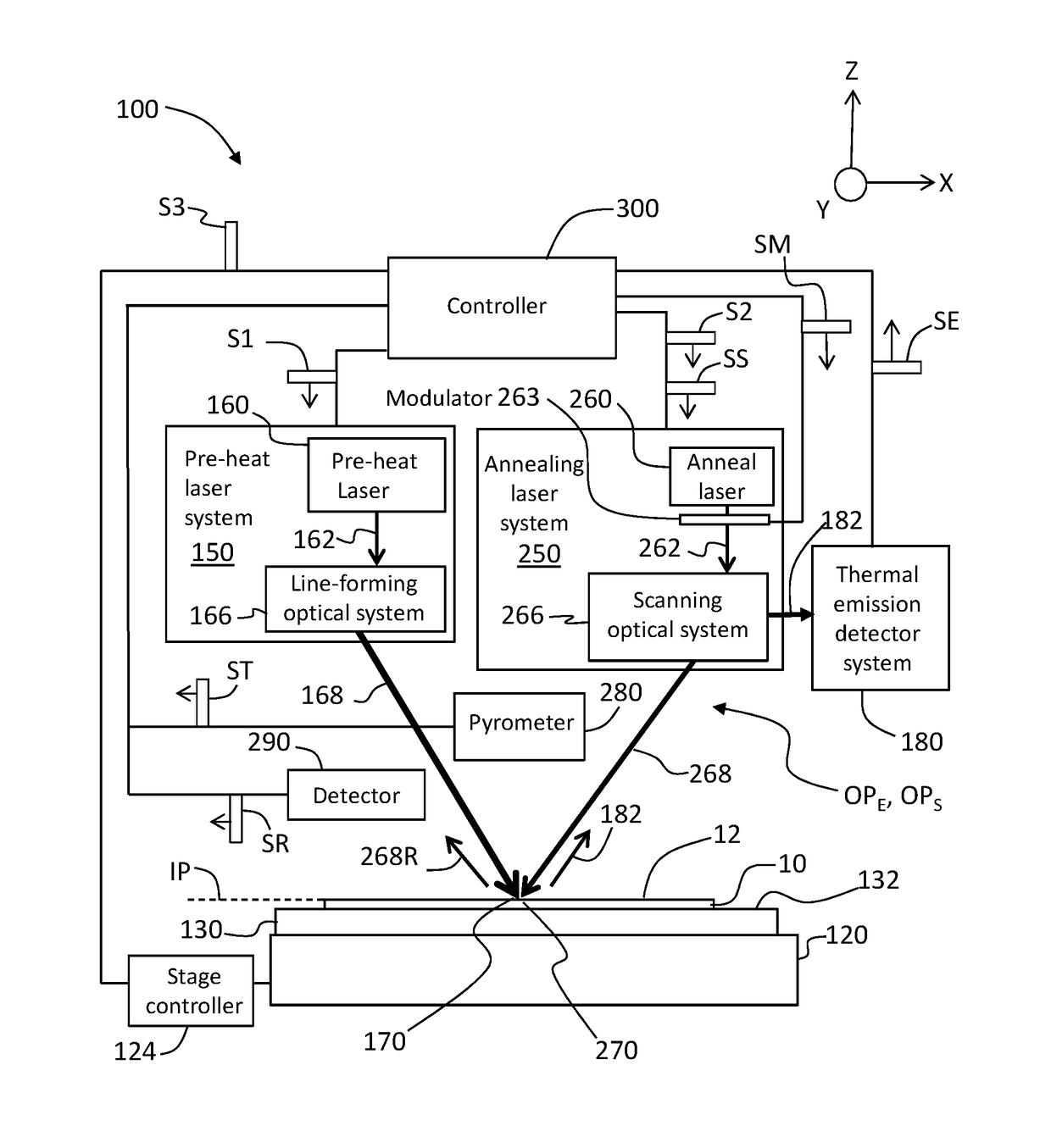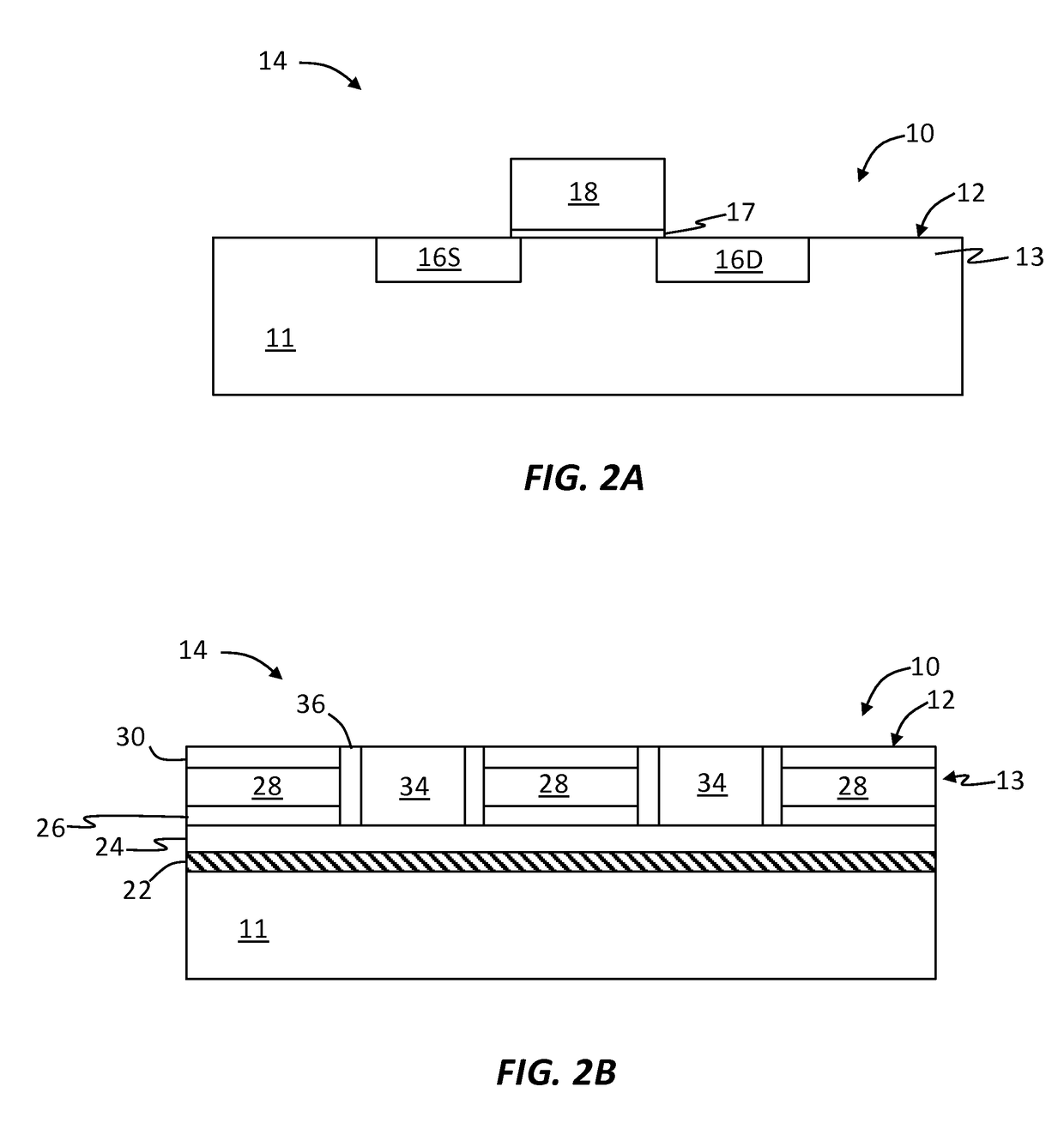Laser annealing systems and methods with ultra-short dwell times
a technology of laser annealing and dwell time, applied in the field of annealing, can solve the problems of difficult implementation of this type of annealing on patterned wafers, -to-pulse repeatability requirements, image uniformity constraints, etc., and achieve the effect of avoiding adverse speckle effects
- Summary
- Abstract
- Description
- Claims
- Application Information
AI Technical Summary
Benefits of technology
Problems solved by technology
Method used
Image
Examples
Embodiment Construction
[0042]Reference is now made in detail to various embodiments of the disclosure, examples of which are illustrated in the accompanying drawings. Whenever possible, the same or like reference numbers and symbols are used throughout the drawings to refer to the same or like parts. The drawings are not necessarily to scale, and one skilled in the art will recognize where the drawings have been simplified to illustrate the key aspects of the disclosure. In some of the Figures, Cartesian coordinates are provided for the sake of reference and are not intended as providing limitations on specific directions and orientations of the systems and methods described herein. The claims as set forth below are incorporated into and constitute part of this detailed description.
[0043]In the discussion below, the term “semiconductor substrate” and “wafer” are synonymous and used interchangeably. Likewise, the terms “substrate surface” and “wafer surface” are synonymous and used interchangeably, with “s...
PUM
| Property | Measurement | Unit |
|---|---|---|
| length L1 | aaaaa | aaaaa |
| length L1 | aaaaa | aaaaa |
| width W2 | aaaaa | aaaaa |
Abstract
Description
Claims
Application Information
 Login to View More
Login to View More - R&D
- Intellectual Property
- Life Sciences
- Materials
- Tech Scout
- Unparalleled Data Quality
- Higher Quality Content
- 60% Fewer Hallucinations
Browse by: Latest US Patents, China's latest patents, Technical Efficacy Thesaurus, Application Domain, Technology Topic, Popular Technical Reports.
© 2025 PatSnap. All rights reserved.Legal|Privacy policy|Modern Slavery Act Transparency Statement|Sitemap|About US| Contact US: help@patsnap.com



